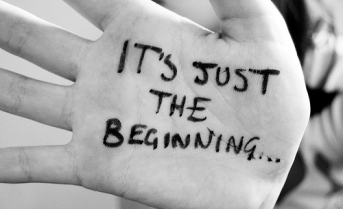There’s a reason many corporations prefer hiring communications professionals who  have experience working on both sides of the table: as a client and for an agency.
have experience working on both sides of the table: as a client and for an agency.
Perspective.
If you have ever been the client, you know what great and lousy client service looks and feels like. And if you later made the switch to the other side of the table, to a public relations or other type of agency, you then had the opportunity to serve clients with the same level of customer service excellence you expected (and perhaps actually received) from your agency when you were the customer.
Also, it pays to be familiar with the pressures and challenges of working on the inside and you can only get that from working on the inside. Too many agency employees have an inaccurate picture of what their clients are up against because they have never walked in their shoes. Perhaps the subject of a future post.
As for me (thanks for asking!), I’ve split my career down the middle with half of my experience as a client and the more recent half serving clients from big, medium and small agencies. During the client years, I saw agency-client relationships disintegrate in slow increments. Typically, it was death by a thousand cuts vs. the result of a single infraction. And sad to say, I witnessed the same phenomenon while on the agency side.
In almost every case, it was the little things that built up over time that led to divorce.
If you are currently working at an agency and have never worked on the client side, here are a few timeless tips — in addition to outstanding results, of course — that will help keep the relationship with your customers on the right path:
- Acknowledge that you received your client’s email or text with a simple “got it” or “will touch base with you on this” or anything that sends the message you are available. A client’s imagination can run wild when their attempts to communicate with you aren’t reciprocated in a timely manner.
- On the other hand, don’t get upset if your client doesn’t get back to your emails or calls in a timely fashion. The agency-client relationship isn’t always a two-way street and that has to be OK with you or you will make yourself crazy. Clients spend lots of time away from their desks, confined in conference rooms for meetings that go on and on and on. And they have their own internal clients to serve and politics to play. Cut them some slack.
- Call your client. Email and team conference calls are great and have their purpose. But some of the best engagements and ideas come about when the account team lead and client chat live. Clients enjoy hearing from their agency, even if it’s just a call to check in. So pick up the phone.
- Remember that the client hired the agency, not you. Show leadership by encouraging all members of your account team to be heard on the weekly group client call. Clients want to hear how every member of the team is contributing. For a client, there’s nothing more uplifting than when on one of these calls a junior person begins to “get it” and shares a brilliant idea.
- Get the agency’s most experienced people involved with your client’s account. Invite them to an occasional brainstorm, especially around the bigger initiatives, and then tell your client about it. Most clients recognize that agency management isn’t involved with their account on a daily basis, but many have the fair expectation that senior agency leaders are making a contribution beyond invoicing.
- Share bad news with your client sooner rather than later. Whether it’s a missed media opportunity, the resignation of a key team member, etc., clients have the right to hear about it as soon as possible because it impacts their business. Too many agencies procrastinate when it comes to sharing negative developments with a client. Most clients, however, realize that despite best efforts, not everything is always going to go as planned. Work together on solutions.
- Encourage your client to occasionally recognize the account team’s good work. They need and most often will appreciate the heads up. And your team will do their best work for the clients who appreciate them.


